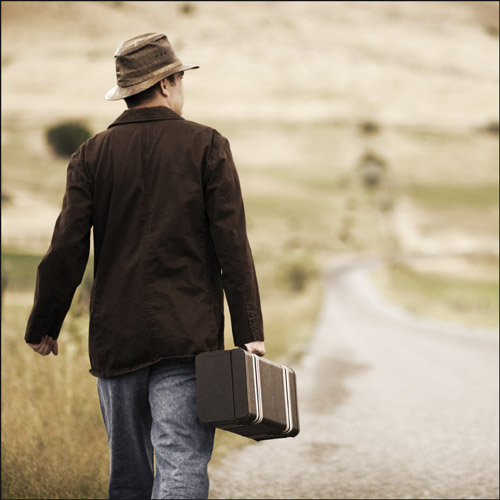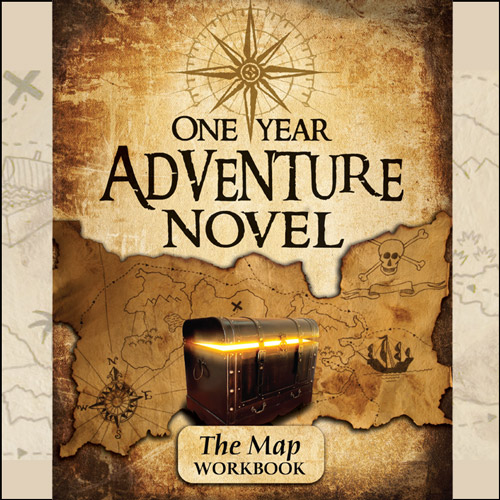How a Map Can Save Your Story
By Tineke Bryson, Staff
In our last post we tackled the intimidation many of us feel about creating a map for our novels. (Thanks, no thanks, J. R. R. Tolkien.) This week we focus on why we can’t afford to give up the dream or hand off the project to someone else:
 There are many viable ways to go about drawing a story world map. But here’s one thing I have no qualms about stating as absolute fact: Our stories actually need us to draw them some maps. And no surrogate, in the form of our more artistic friend, will do.
There are many viable ways to go about drawing a story world map. But here’s one thing I have no qualms about stating as absolute fact: Our stories actually need us to draw them some maps. And no surrogate, in the form of our more artistic friend, will do.
We have to meet our world. We need to learn to work together. Test each other’s limits. Find out what makes each other tick.
Basically, we need to slog through the sort of awkwardness that goes with making a friend.
Until we take on the challenge of drawing a map, there’s a real risk that we’ll write a pretty story that does not feel real. If our plot could just as easily take place in any setting, any time, any culture, then there is no world supporting it. It’s not half the plot it could be.
Map-making is intrinsically conversational. We may be holding the pencil, but we’re not the only party involved. Our story world has to show up too (literally). It has a vested interest. Because it counts on us to make sense.
Are you a sensible person? Can your novel trust you to have common sense? About culture? Geography? Transportation?
When you put pencil down to paper to invent a world, it gets its chance to tell you about all its worries. The rocky country to the north (yes, the one you only discovered when it grew from the end of your pencil) looks like an ideal hideout for guerilla warriors. That immense plain to the west is empty of more than visual interest. How is your hero’s roving band going to eat while they walk across it? And, for a kingdom 9/10ths coast, where is your navy?
(Oops.)
These and other issues pop up like prairie dogs every time you blink. Because you’re facing your novel across the paper, forced to listen to what your world has to say about itself.
Sometimes the give-and-take will make you giddy. You’ll find the land pliable; the coastline willing to twirl on your arm in any direction you take it.
Other times it’s going to feel like a breakup conversation. You may find, as you draw, that the world your story needs is nothing like the world you want.
Or, if you’re like me, you’ll be silly enough to locate your center of commerce within the ice-capped mountain range because the crags will set off your architecture stunningly. Your world will put its foot down and insist that you put the city on the coast where it will have a good harbor. And begrudge you a mountain there, on the coast, if you must.
Moments of tension like these have taught me that actually drawing our story world is much more important to our novels than we might think.
So besides a willingness to “talk” openly with our world, what does it take?
I could say that all maps require are clean sheets of paper, pencil and eraser, and calligraphy pens (or, any ink pens will do). But really desire and reason are actually just as important to a map as pencil and paper.
Desire
I learned the importance of desire from my younger self. When I was a young writer, I drew maps that pleased me. The outline of the coast, the curve of the rivers, the herds of mountain humps—all were the traces of my mind at play. Because I was a child, the idea that my map was not equal to those of Tolkien didn’t faze me. Of course it wasn’t! I was just beginning. I was just a kid making something beautiful.
Considering Tolkien the professor built his fictional world in his limited free time, we know that this is also why he made maps and why he wrote at all: for pure pleasure.
But this is irritating, I know. Because the results born of one person’s desire can look pathetic compared to the results born of someone else’s.
I don’t mean to toy with anyone’s hopes. When I encourage us to shut off comparison to give ourselves over to the joy of creating, I’m not suggesting that “Everyone’s map is going to get a gold star.” I’m not erasing the fact that a beautiful map requires skill.
But I am saying that you should definitely draw your own maps. Wrestling with a story world until you both come out with a deeper respect for each other’s limits is not a task you want to surrender to someone else. It is too rewarding.
If you really aren’t handy at making your resulting ideas live on paper, don’t hesitate to ask someone with more artistic skill to lend a helping hand—but only once you’ve broken a sweat on it yourself.
The only difference between the “pathetic,” “inferior” map you make and someone else’s may just be presentation. And that’s a sorry reason to hold back on getting acquainted with your story world.
And if you’re artistic but having trouble coming up with content? That’s something you can do something about as well:
Reason
Building a world that makes sense—that operates on a system of believable causes and effects—takes research and planning, but perhaps more than anything it takes curiosity.
We need to ask why, why, why.
Why is there a river here? Why did people settle in this exact spot? Why is this area a desert if the region to the north is densely forested? Why doesn’t it rain much on the journey I’m planning across this country? Should I make it rain?
And we need to ask how.
How did this race/people group/tribe develop their culture? How has it been shaped by the setting? The climate? If I need there to be communication between the capital and this remote village, how is that going to happen? How do people travel? How do these villagers feel about the governmental seat in the capital? Why?
Whether you make a world and then find it a suitable story, or start with a story and figure out what its world must look like, there’s a push and a pull between you, as the creator, and the map.
The tremendous thing about this dynamic is that the geography we ourselves create can yield clues and suggest patterns. An environmental setting can practically hand us a culture for the people we’ve decided to locate there.
Frank Herbert’s science fiction classic, Dune, is an example of this. He was inspired to write Dune through doing research for a journalism piece on the dunes of Oregon. Apparently he never did get around to the article, because he became so absorbed in studying the ecosystem of the dunes that he created a fictional desert planet to explore its implications for a people living in an even more extreme version of its ecosystem. Whether you like Dune or not, you can’t read it without being blown away by the way Herbert brought the desert to bear on every aspect of Fremen culture: religion, military tactics, housing, leadership structure, transportation, diet, family life, oral tradition, etc.
It’s staggering what a cause-and-effect approach to world-building can unlock.
Next time you’re at a loss to create a new people group for your novel, try creating a setting. And stand back and be amazed at how much the setting can fill in. Find out how people on earth in a similar environment have lived, thought, and behaved. Make the connections. Notice the causes and effects. Then add a twist.
Set your standards high. Apply your reasoning powers to every aspect of your map. “Epic-looking” is not enough. Curly writing is not enough. You need to strive for logic.
For example, take your map’s scale. One of the chief reasons writers make maps is to work out distances. In a recent post, Daniel Schwabauer talks about how he took to drawing maps to work out the details of trips his characters take.
If you intend your map to represent a map people from your fictional world created, you may want to develop a different scale and measuring system instead of using our empirical or metric system. After all, is there a reason why your characters would use inches to a mile, or centimeters to 100 kilometers? Making your own scale for your novel can be as simple as renaming existing measurements in gibberish, but what if you took it a step further and considered what object your characters’ ancestors would have measured distance by? Feet? A man’s stride? The length of a serpent common to their area? The distance a pack animal could make in a day?
What makes the most sense?
We need to push our minds to find the reasonable answers. It may take more time than we’d like, but it’s time worth taking. What we can learn by sitting down with our world and working out our problems will be so rewarding for us, never mind our eventual readers.
There’s nothing quite like a fiction of the mind that can move a flesh-and-blood reader to their depths because “this story could actually have happened.” Readers don’t have that kind of reaction to a story that could have taken place anywhere. If it could have taken place anywhere, chances are it happened nowhere—because the writer didn’t take the trouble to build a world.



I’m reminded of Sir Terry Pratchett’s adage in which he explains his dearth of cartography: “You can’t map a sense of humour. Anyway, what is a fantasy map but a space beyond which There Be Dragons?”
I’m in two minds about fantastic maps. I think on the one hand they can help an author answer some basic questions: how far can a person walk in a day? Or how far can a tribe migrate in a year? Or how far must two civilisations be before it is plausible that there is no traffic between them? The questions you’ve posed above are also excellent, and a good map can certainly help a writer (and his readers) figure some of this out.
On the other hand, I think that unless a story revolves very keenly around a journey between two points, a map–or even merely an abundance of travel–can be a distraction from the storytelling and characterisation.
Thank you for sharing. Certainly not every story needs to present maps to the reader; I do argue that they are necessary to the writer. Perhaps Terry Pratchett was the rare writer who did not need to visualize on paper to avoid being vague. Most writers who skip maps weaken their story with vagueness.
You are so right that a journey does not make a plot—this is something we cover in the curriculum as well. However, although the story world should not be the main character, the characters are not going to be believable if they are not shaped by context, environment, and culture. Drawing a map makes characterization stronger.
Ideally, it should make everything about the story stronger. It should serve the story.
No rivers without watersheds.
Mark, basically, I should have just written that. It says it all. Like a haiku version of this 1000+ word post.
I loved your last post, Tineke, and this one is wonderful as well! Maps are always a sticky point for me – I consider them important, but I think I’m bad at drawing them. Thus, your points have me thinking. I’m afraid that my WIP is one of those that could be set almost anywhere, and I definitely want to fix that problem. I’ll be reworking my map during editing, and I can assure you I’ll be putting your advice to use! 🙂
I’m glad this has encouraged you. Just try to remember that your ability as an artist does not limit your ability to desire and your ability to reason. The very fact that you feel weak as an artist may actually be an advantage, because you won’t be distracted from shallow thinking by how “pretty” something looks. All the best!
True. 🙂 I’ll try to remember that!
I totally agree that maps are incredibly invaluable. I’ve made some maps and they’ve always inspired me for more stories. For better stories. For cultural development. For trade routes and the like.
As Mr. S says, boundaries inspire creativity. That’s certainly true for maps.
Though on making new measurements, while the characters may use them, the readers are not going to know what they’re talking about. It’s like reading ‘cubit’ or ‘rod’ in the Bible—it’s hard for us to picture those distances simply because we don’t use them.
I like the connection you’ve made with that Mr. S. maxim!
Yes, I agree, there’s definitely a confusion risk with something like an invented measurement system. I do think two things can help: (1) giving the measurements a pronounceable name, and (2) providing context. When the characters refer to the measurement there needs to be some kind of indication as to how long/big/heavy we’re talking. Initially, some well-placed exposition.
I know what you mean about biblical measurements. Those books were written for people who knew what they meant; we write stories for people who don’t, so I hope we can drop the needed clues.
Thank you for reading!
I also agree about the importance of maps. I write YA Contemporary stories and I still draw maps so I know where the grocery store is in comparison to the main character’s house (obviously these are much less work intensive than say a George R. R. Martin novel). But I need that visual to keep my writing in check, so I always know my characters turns right when she walks home from school and I don’t waste a lot of time flipping back through my notes.
After writing this, I realized how fantasy-focused this series on maps has been. I didn’t set out to address fantasy only, but the majority of young writers we work with are into fantasy. I agree that maps are equally important to stories set in the “real” world. Some of my favorite examples of maps in novels are slice-of-life YA. Considering how limited kids are in space (can’t drive yet, etc.), their physical surroundings play such an important role in their choices. Thank you for bringing this up!
Maps are great additions to novels, provide perspective to readers as they orient themselves to the setting of a story.